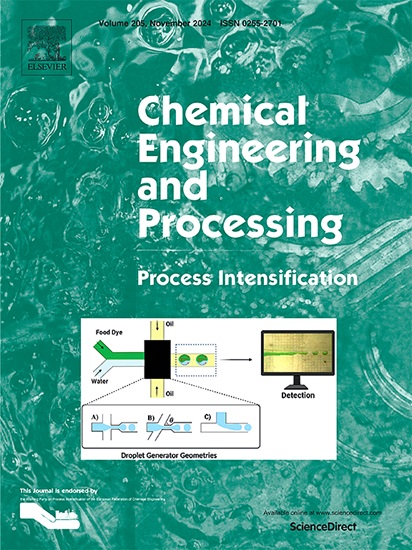3D-printed packed bed reactor for continuous catalytic hydrogenation of nitroaromatic compounds
IF 3.8
3区 工程技术
Q3 ENERGY & FUELS
Chemical Engineering and Processing - Process Intensification
Pub Date : 2025-02-01
DOI:10.1016/j.cep.2024.110141
引用次数: 0
Abstract
Aromatic amines (AAMs) are essential compounds for producing a wide range of industrial and pharmaceutical products. However, traditional synthesis methods using nitroaromatic compounds (NACs) pose environmental and health risks due to byproduct contamination and the carcinogenic nature of NACs. In this context, this study introduces a novel catalyst containing rhenium (Re) active sites. While this approach does not eliminate the carcinogenic risks associated with NACs, it aims to improve process efficiency. The catalyst, synthesized within a styrene-based matrix functionalized with 1,1′-carbonyldiimidazole, combines high affinity for NACs with the catalytic prowess of Re that may be also a tool in achieving process selectivity. Characterization via XPS and HRTEM confirmed the presence of highly dispersed Re species within the polymer matrix. The catalyst demonstrated superior activity in batch hydrogenation of various NACs, achieving high conversion rates. A 3D-printed packed bed reactor (PBR) was then developed for continuous flow-mode reduction of 4-nitrophenol (4-NP), achieving significant processing capacity and highlighting its potential for scalable applications. This innovative approach not only addresses environmental concerns associated with NACs but also enhances the efficiency of AAM production, presenting a viable solution for industrial processes.
求助全文
约1分钟内获得全文
求助全文
来源期刊
CiteScore
7.80
自引率
9.30%
发文量
408
审稿时长
49 days
期刊介绍:
Chemical Engineering and Processing: Process Intensification is intended for practicing researchers in industry and academia, working in the field of Process Engineering and related to the subject of Process Intensification.Articles published in the Journal demonstrate how novel discoveries, developments and theories in the field of Process Engineering and in particular Process Intensification may be used for analysis and design of innovative equipment and processing methods with substantially improved sustainability, efficiency and environmental performance.

 求助内容:
求助内容: 应助结果提醒方式:
应助结果提醒方式:


